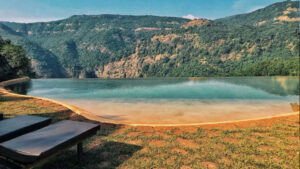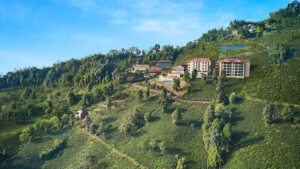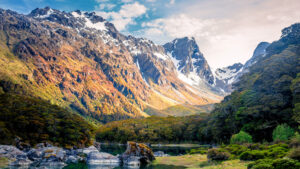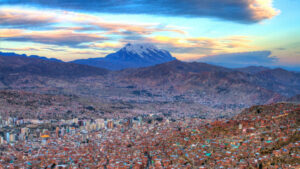REGAL RETREATS: DIVE INTO THE GRANDEUR OF BANGKOK’S RENOWNED PALACES

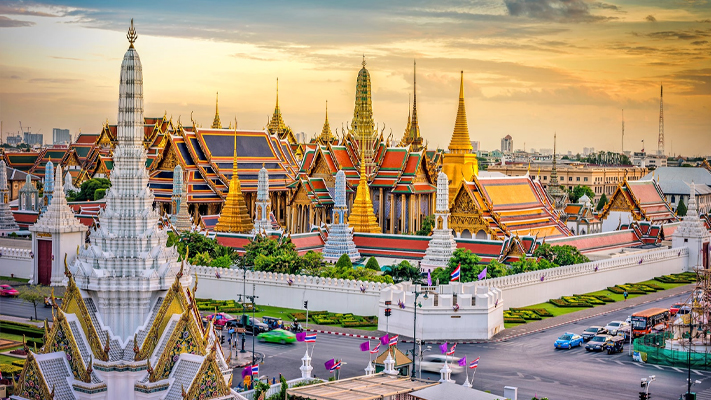

Embark on a journey through Bangkok, the vibrant capital of Thailand, where stunning palaces stand as living testaments to the country’s rich cultural and historical heritage. These architectural wonders are not just landmarks; they encapsulate a vibrant tapestry of history and tradition.
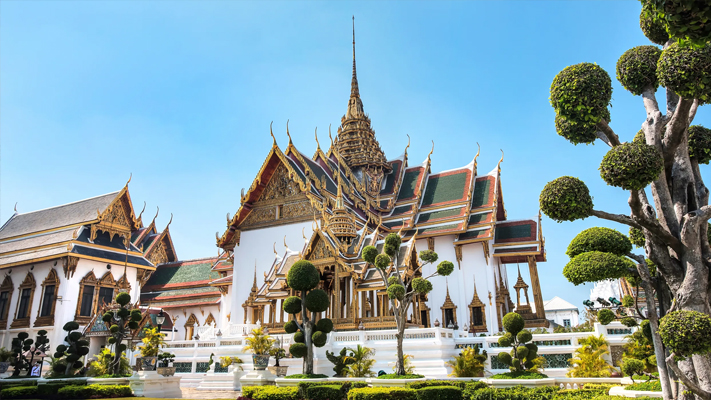
Here are some must-visit palaces in Bangkok:
1. Grand Palace: An iconic landmark, the Grand Palace served as the official residence of Thai Kings from the 18th to the mid-20th century. The complex includes the revered Temple of the Emerald Buddha, a breathtaking testament to Thai craftsmanship.
2. Sanam Chandra Palace: Nestled in Nakhon Pathom province, this royal residence is a blend of Thai and European styles. Commissioned by King Rama VI, it served as a retreat during his visits. Explore the unique architecture and historical significance of this gem.
3. Vimanmek Mansion: Part of the Dusit Palace complex, Vimanmek Mansion is the world’s largest golden teakwood mansion. Once the residence of King Rama V, it now stands as a museum showcasing Thai art and artifacts, providing a glimpse into the royal past.
4. Dusit Palace Complex: Home to various palaces, gardens, and throne halls, the Dusit Palace complex is a treasure trove of architectural splendors. Marvel at structures like the Ananta Samakhom Throne Hall and the Abhisek Dusit Throne Hall within this regal expanse.
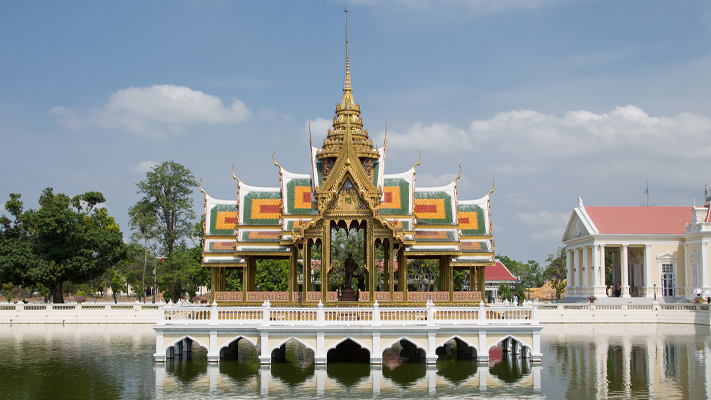
5. Bang Pa-In Royal Palace: Just an hour north of the city, the Bang Pa-In Royal Palace is a breathtaking summer retreat. With a fusion of Thai, Chinese, and European architectural styles, this palace complex invites you to stroll through its picturesque gardens and explore its regal charm.
In Bangkok, each palace narrates a unique story, combining opulence, history, and artistry. Dive into the majestic world of these famous palaces, and let the cultural richness of Thailand unfold before you.
Recommended Articles
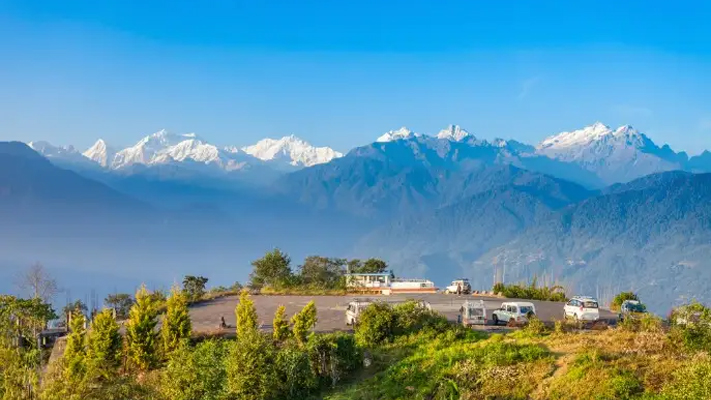

Embark on a mesmerizing road trip through the lush green landscapes of the Eastern Himalaya, weaving through iconic destinations like Siliguri, Darjeeling, Pelling, and Yuksom. This journey not only takes you through the famed tea plantations and colonial charm of the region but also offers breathtaking views of the Himalayas and a glimpse into the cultural richness of monasteries.
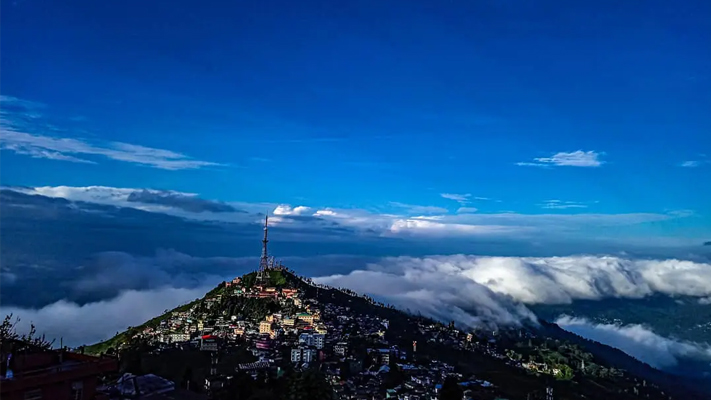
Day 1: Siliguri to Kurseong to Selim Hill Tea Estate Distance: 38 km (Siliguri to Kurseong), 26 km (Kurseong to Selim Hill) Time: 1.5 hours, 45 mins
adsplacement
Day 2: Selim Hill Tea Estate to Darjeeling Distance: 54 km Time: 2 hours
Day 3: Darjeeling to PellingDistance: 70 km Time: 4 hours
adsplacement
Day 4: Pelling to YuksomDistance: 40 km Time: 1.5 hours
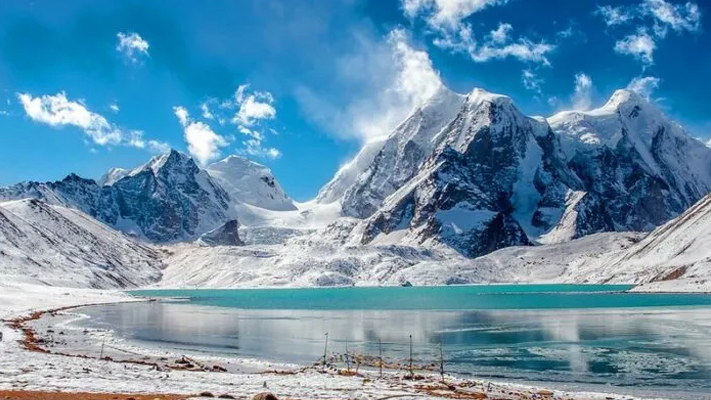
This road trip from Siliguri to Yuksom encapsulates the essence of the Eastern Himalaya. From the colonial charm of tea estates in Darjeeling to the serene landscapes of Pelling and the historical significance of Yuksom, each destination unfolds a unique story. The journey not only offers a visual treat with Himalayan vistas but also provides a cultural immersion through monasteries and historical sites. Travelers are sure to be captivated by the diverse tapestry of this Himalayan odyssey.
Recommended Articles
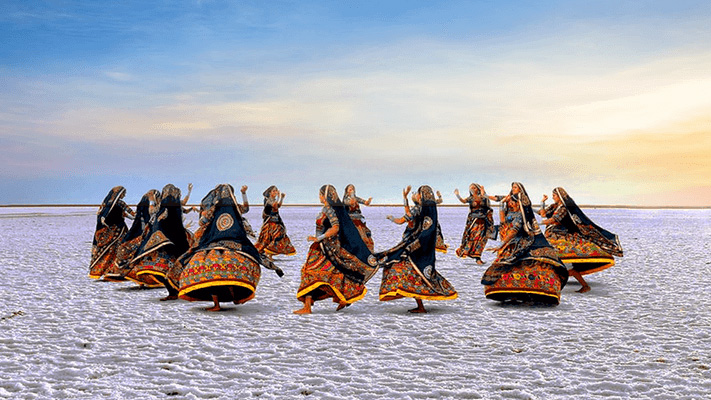

The Rann of Kutch is a seasonal salt marsh located in the Thar Desert of the Kutch district in Gujarat, India. It is the largest salt desert in the world, spanning over an area of approximately 7,500 square miles (19,000 square kilometers).

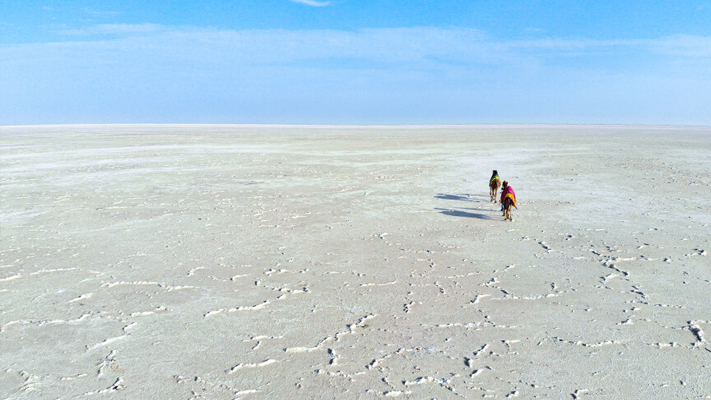
During the monsoon season, the Rann of Kutch gets submerged in water, making it a breeding ground for flamingos and other migratory birds. In winter, the water recedes, leaving behind a vast expanse of white salt flats, creating a surreal landscape that is a photographer’s dream.
The Rann of Kutch is also home to a vibrant cultural heritage, with numerous tribes and communities living in the region, such as the Kutchi people, Rabaris, Ahirs, and others. The region is known for its intricate handicrafts, including embroidery, block printing, and tie-dye textiles.
Moonlight Views
The moonlight views in the Rann of Kutch are absolutely breathtaking and a must-see for visitors. The white salt desert reflects the moonlight in a way that creates a surreal and almost otherworldly atmosphere. During a full moon night, the Rann of Kutch is transformed into a magical landscape, with the salt crystals glowing under the moonlight. Visitors can take a moonlit walk on the salt desert, go on a camel safari, or simply sit back and enjoy the stunning views. Moonlight views are especially popular during the Rann Utsav, as the festival organizers arrange special night tours for visitors to experience the beauty of the Rann under the moonlight. The moonlight views are an unforgettable experience and a must-see for anyone visiting the Rann of Kutch.
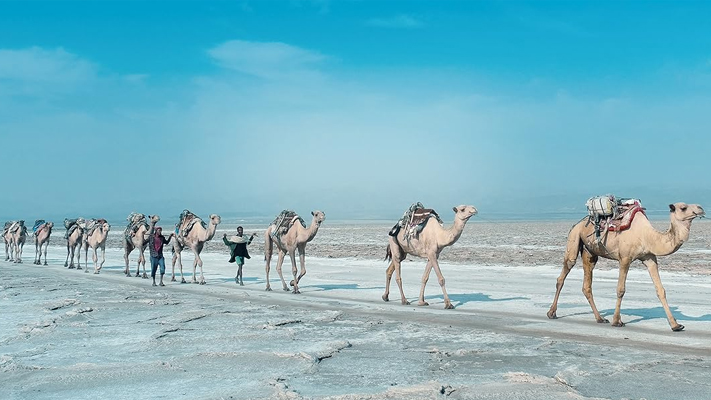

What Makes it Special as a Tourist Destination
The Rann of Kutch is a special tourist destination for several reasons:
1. Unique landscape: The Rann of Kutch is the largest salt desert in the world, offering a surreal landscape of white salt flats that stretches as far as the eye can see. The barren land and the stark beauty of the region make it a unique and unforgettable destination.
2. Cultural diversity: The Rann of Kutch is home to several tribal communities, each with their distinct cultural identity and heritage. The region is known for its vibrant and colorful handicrafts, including embroidery, block printing, and tie-dye textiles. Visitors can explore the region’s rich cultural diversity and interact with the locals to learn more about their way of life.
3. Wildlife: The Rann of Kutch is a breeding ground for flamingos and other migratory birds, making it a haven for birdwatchers and nature enthusiasts. Visitors can witness the spectacle of thousands of flamingos taking flight against the backdrop of the white salt flats.
4. Festivals: The Rann of Kutch hosts the Rann Utsav, a vibrant cultural festival that celebrates the region’s cultural diversity and heritage. The festival offers a range of activities, including traditional dance performances, camel rides, handicraft bazaars, and more.
Experiences for Tourists
The Rann of Kutch offers a range of experiences for tourists, including:
1. Camel safaris: Explore the vast expanse of the salt flats on a camel safari, which offers a unique and unforgettable way to experience the beauty of the region.
2. Birdwatching: The Rann of Kutch is home to a diverse range of bird species, including flamingos, pelicans, cranes, and more. Birdwatchers can witness these magnificent creatures in their natural habitat.
3. Cultural experiences: The Rann of Kutch is known for its vibrant cultural heritage, and visitors can experience this through various activities such as visiting local villages, interacting with tribal communities, and exploring local handicraft bazaars.
4. Festival celebrations: The Rann Utsav is a cultural festival held every year between November and February, celebrating the region’s cultural diversity and heritage. Visitors can enjoy traditional dance performances, music, handicrafts, and more.
5. Stargazing: The Rann of Kutch is known for its clear skies, making it an ideal destination for stargazing. Visitors can witness the spectacular sight of millions of stars twinkling against the backdrop of the white salt flats.
6. Adventure sports: The Rann of Kutch offers a range of adventure sports, including ATV rides, parasailing, and more, making it an ideal destination for thrill-seekers.
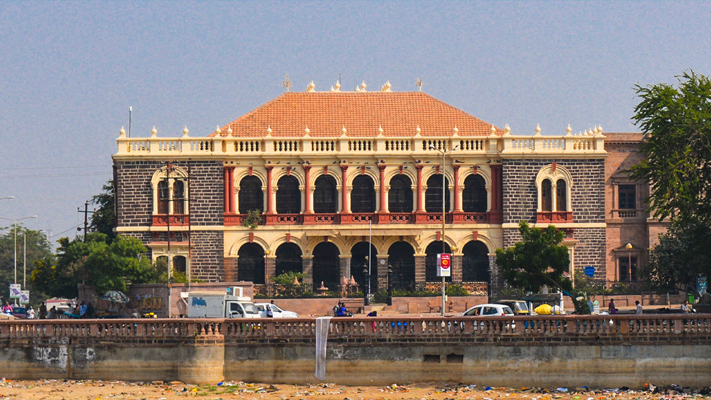

Top Attractions and Must Visit Places
Here are some of the top attractions and must-visit places in and around the Rann of Kutch:
1. The Great Rann of Kutch: The largest salt desert in the world, the Great Rann of Kutch is a must-visit destination for its unique landscape and stunning natural beauty.
2. Kala Dungar: Also known as the Black Hill, Kala Dungar offers panoramic views of the Rann of Kutch and is a popular spot for watching the sunset.
3. Kutch Museum: Located in Bhuj, the Kutch Museum houses a collection of artifacts and exhibits that showcase the region’s rich cultural heritage.
4. Aina Mahal: Built in the 18th century, the Aina Mahal is a palace that features intricate mirror work, glass work, and other forms of decorative art.
5. Mandvi Beach: Located on the coast of the Arabian Sea, Mandvi Beach is a popular destination for swimming, sunbathing, and water sports.
6. Vijay Vilas Palace: A beautiful palace located in Mandvi, the Vijay Vilas Palace is known for its stunning architecture and expansive grounds.
7. Narayan Sarovar: A sacred lake located in the Lakhpat Taluka of Kutch, Narayan Sarovar is a pilgrimage site for Hindus and is believed to be the source of the river Saraswati.
8. Kutch Desert Wildlife Sanctuary: The Kutch Desert Wildlife Sanctuary is home to a variety of wildlife species, including the Indian wild ass, desert fox, and various bird species.
These are just a few of the many attractions and must-visit places in and around the Rann of Kutch. Visitors can also explore local villages, interact with tribal communities, and enjoy the region’s vibrant cultural heritage and traditions.
Best Time to Visit
The best time to visit the Rann of Kutch is during the winter months from November to February, when the weather is cool and pleasant with temperatures ranging from 12°C to 25°C. During this time, the salt desert is at its best, and visitors can enjoy various activities such as desert safaris, camel rides, and cultural events.
One of the most popular events that takes place during this time is the Rann Utsav, a cultural festival that showcases the region’s rich cultural heritage and traditions. The festival typically runs from November to February and includes a variety of events such as music and dance performances, handicraft exhibitions, and local food festivals.
Visitors should avoid traveling to the Rann of Kutch during the monsoon season, which runs from June to September, as the area experiences heavy rainfall and is prone to flooding. The summer months from March to May are also not ideal for visiting, as temperatures can soar up to 45°C, making it difficult to explore the region.
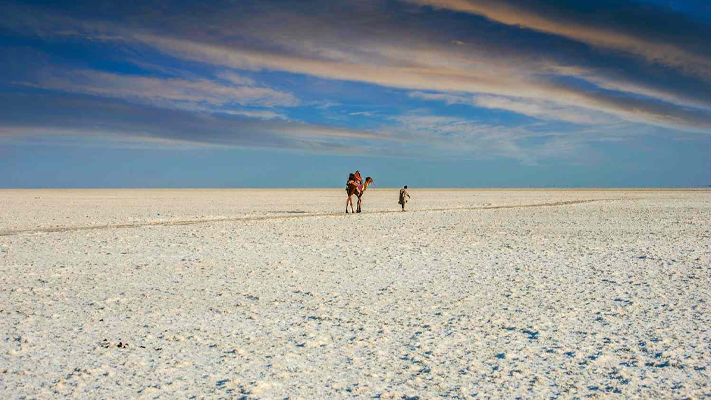

How to Reach
The Rann of Kutch is located in the western state of Gujarat in India. Here are some of the ways to reach the region:
1. By Air: The nearest airport to the Rann of Kutch is the Bhuj Airport, located about 70 km away. Regular flights connect Bhuj to major cities in India such as Mumbai, Delhi, and Ahmedabad.
2. By Train: The nearest railway station is the Bhuj Railway Station, which is well-connected to major cities in India such as Mumbai, Ahmedabad, and Delhi. From Bhuj, visitors can hire a taxi or take a bus to reach the Rann of Kutch.
3. By Road: The Rann of Kutch is well-connected by road, with regular bus services operating from major cities in Gujarat such as Ahmedabad, Rajkot, and Bhuj. Visitors can also hire a taxi or self-drive to reach the region.
Once in the region, visitors can explore the Rann of Kutch on foot, take a camel ride, or go on a desert safari to experience the unique landscape and culture of the region.
Shopping at the Rann of Kutch
The Rann of Kutch is a popular destination for shopping, as the region is known for its vibrant handicrafts and textiles. Here are some of the best things to buy while shopping in the Rann of Kutch:
1. Embroidery: The Kutch region is famous for its intricate embroidery work, which is done on fabrics such as silk, cotton, and wool. Visitors can buy a range of embroidered products, including clothing, home decor items, and accessories.
2. Handicrafts: The Rann of Kutch is home to several traditional communities, each with their own unique handicrafts. Visitors can buy a range of handmade products, including pottery, woodwork, and leather goods.
3. Textiles: The Kutch region is also known for its beautiful textiles, including bandhani (tie-dye) and ajrakh (block-printed) fabrics. Visitors can buy a range of textiles, including saris, shawls, and scarves.
4. Jewelry: The Rann of Kutch is also known for its traditional jewelry, including silver and beaded jewelry. Visitors can buy a range of jewelry, including necklaces, bracelets, and earrings.
5. Souvenirs: Visitors can also buy a range of souvenirs, including postcards, keychains, and magnets, as well as local spices, tea, and snacks.
Recommended Articles
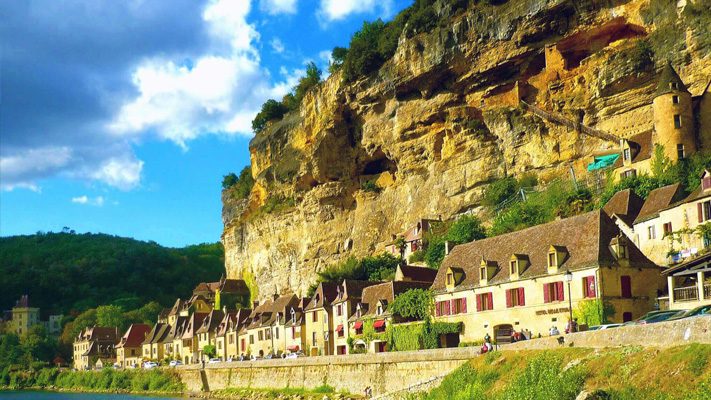

La Roque-Gageac is a beautiful village located in the Dordogne department of southwestern France. The village is situated along the Dordogne River and is known for its stunning cliffs that tower over the river and its traditional stone houses.

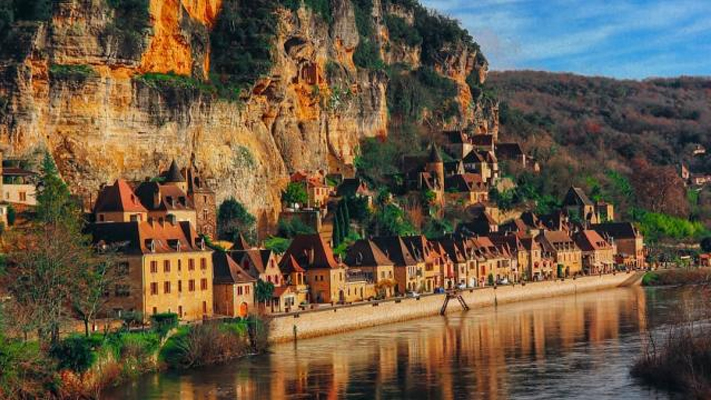
One of the most popular attractions in La Roque-Gageac is the Château de La Malartrie, a stunning 19th-century castle that offers magnificent views of the village and the surrounding countryside. Visitors can also take a boat ride on the Dordogne River to see the village from the water, or explore the narrow streets and alleys of the village on foot.
La Roque-Gageac is also known for its gardens, including the exotic gardens of the Manoir d’Eyrignac and the Jardins de Marqueyssac, which offer beautiful views of the surrounding landscape. In addition to these attractions, the village is also home to several restaurants and cafes that serve traditional French cuisine, as well as a number of small shops selling local handicrafts and souvenirs.
What Makes it a Destination Worth Visiting
There are several reasons why La Roque-Gageac is a destination worth visiting. Here are a few:
Overall, La Roque-Gageac offers visitors a unique blend of natural beauty, history, and culture that make it a destination worth visiting. Whether you’re interested in exploring the village’s rich history, enjoying the stunning scenery, or indulging in delicious local cuisine, La Roque-Gageac has something to offer everyone.

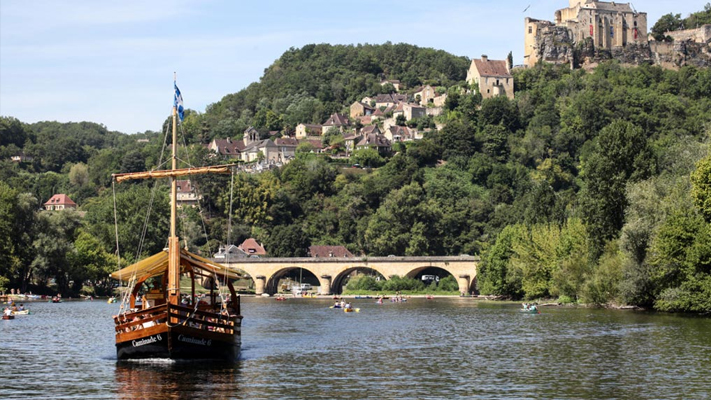
Popular Activities Enjoyed by Tourists
There are several popular activities enjoyed by tourists who visit La Roque-Gageac. Here are a few:
Top Attractions and Must See Places
La Roque-Gageac and its surrounding area offer visitors a range of attractions to explore. Here are some of the top attractions and must-see places:

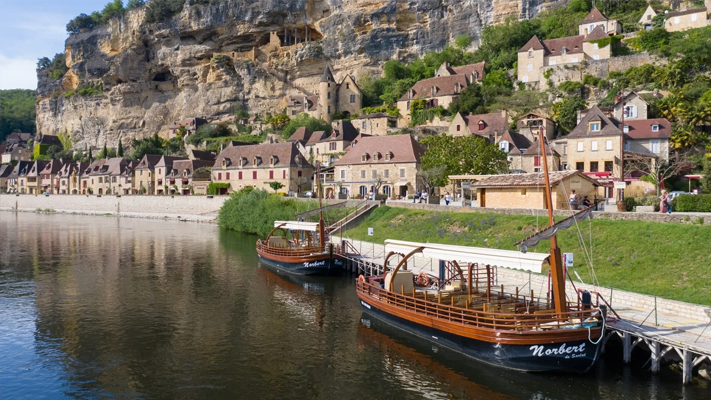
Best Time to Visit
The best time to visit La Roque-Gageac depends on your preferences and what you want to experience. Here’s a breakdown of the weather, events, and festivals to help you decide:
Weather: The climate in La Roque-Gageac is mild and temperate, with warm summers and mild winters. The best time to visit for warm weather is from June to August, with average temperatures ranging from 20°C to 28°C. Spring (March to May) and autumn (September to November) are also good times to visit, with temperatures ranging from 10°C to 20°C. Winters (December to February) can be chilly, with temperatures averaging around 5°C.
Events and festivals: La Roque-Gageac hosts several events and festivals throughout the year. Here are some of the most popular:
Recommended Articles
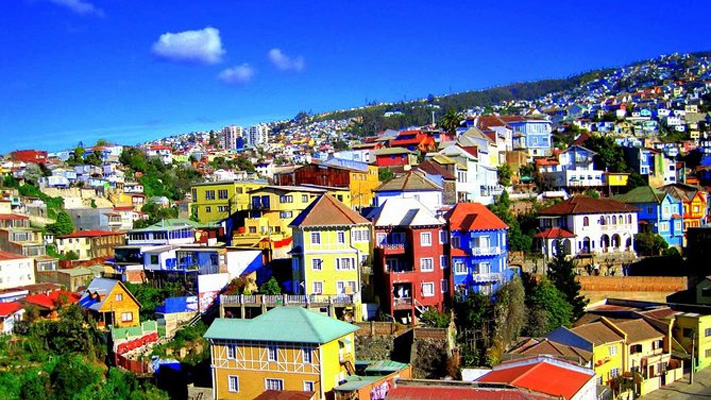

Valparaíso is a coastal city in central Chile, located about 120 km northwest of the capital city of Santiago. It is known for its colorful and bohemian neighborhoods, beautiful architecture, and vibrant arts scene. Valparaíso is a UNESCO World Heritage Site and is often called the “Jewel of the Pacific” due to its natural beauty and historical significance.

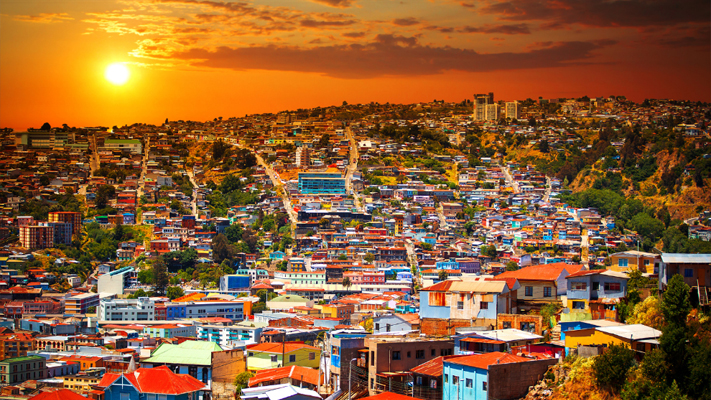
Valparaíso has a long and rich history, having been founded in 1536 by Spanish conquistadors. It played an important role in Chile’s struggle for independence, and its historic port was once a key stop for ships traveling between the Pacific and Atlantic Oceans.
Today, Valparaíso is a thriving city with a rich cultural heritage. Its steep hills are covered with colorful houses and street art, and its historic downtown is home to many museums, art galleries, and cultural centers. The city is also known for its vibrant nightlife, with many bars, restaurants, and music venues.
Valparaíso is also a gateway to many natural attractions, such as the nearby beaches, the Aconcagua mountain range, and the Casablanca Valley wine region. Overall, Valparaíso is a unique and fascinating destination that offers a blend of natural beauty, cultural richness, and historical significance.

Factors that make it a Destination Worth Visiting
1. Rich history and cultural heritage: Valparaíso has a long and fascinating history, having played an important role in Chile’s struggle for independence. Its historic downtown is home to many museums, art galleries, and cultural centers, making it an ideal destination for those interested in history and culture.
2. Stunning architecture: Valparaíso is known for its beautiful and colorful architecture, with many of its houses and buildings dating back to the 19th century. The city’s historic port was once a key stop for ships traveling between the Pacific and Atlantic Oceans, and its unique architecture reflects this rich maritime history.
3. Vibrant arts scene: Valparaíso is home to many artists and writers, and its steep hills are covered in colorful street art and murals. The city is also home to many theaters, music venues, and cultural festivals, making it an ideal destination for those interested in the arts.
4. Natural beauty: Valparaíso is located on the coast, and its stunning beaches and ocean views are a major draw for visitors. The city is also a gateway to many natural attractions, such as the nearby Aconcagua mountain range and the Casablanca Valley wine region.
5. Unique character and atmosphere: Valparaíso has a bohemian and laid-back atmosphere that is unlike any other city in Chile. Its steep hills, colorful houses, and vibrant street life give it a unique character and charm that is sure to captivate visitors.
Popular Tourist Activities
Here are some popular tourist activities in Valparaíso:
1. Explore the historic downtown: Valparaíso’s historic downtown is a UNESCO World Heritage Site and is home to many museums, art galleries, and cultural centers. Visitors can take a walking tour of the city’s historic sites, including the Plaza Sotomayor, the Naval and Maritime Museum, and the Palacio Baburizza.
2. Ride the funiculars: Valparaíso is built on steep hills, and the city’s funiculars offer a unique way to explore the city. These cable cars provide stunning views of the city and its surroundings, and visitors can ride them to the top of Cerro Alegre and Cerro Concepción, two of the city’s most famous hills.
3. Admire the street art: Valparaíso is known for its colorful and vibrant street art, with many of the city’s hills covered in murals and graffiti. Visitors can take a guided tour of the city’s street art scene or explore on their own to discover some of the city’s most beautiful and thought-provoking pieces.
4. Visit the beaches: Valparaíso is located on the coast, and the nearby beaches are a popular destination for both locals and tourists. Playa Caleta Portales and Playa Las Torpederas are two of the city’s most popular beaches, offering stunning ocean views and plenty of opportunities for swimming and sunbathing.
5. Enjoy the nightlife: Valparaíso has a vibrant nightlife scene, with many bars, restaurants, and music venues. Visitors can enjoy live music at the El Huevo nightclub, sample local wines at the wine bars in Cerro Concepción, or savor fresh seafood at the seafood restaurants in the city’s port area.

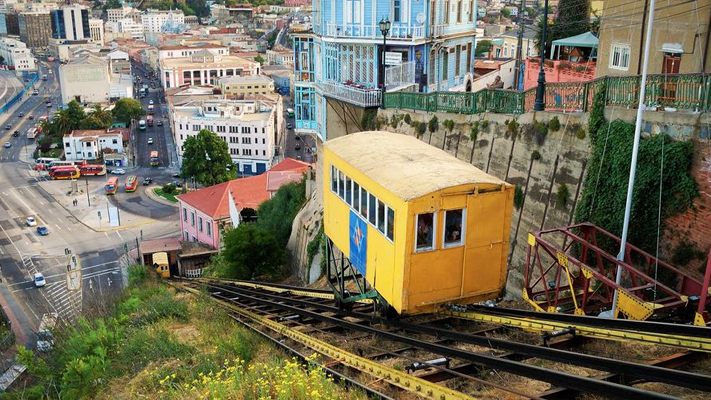
Top Attractions and Must Visit Places
Here are some top attractions and must-visit places in and around Valparaíso:
1. Cerro Alegre and Cerro Concepción: These two hills are among Valparaíso’s most famous and beautiful neighborhoods, known for their colorful houses, stunning architecture, and vibrant street art. Visitors can explore the narrow alleyways, staircases, and hidden courtyards of these hills and enjoy panoramic views of the city and the ocean.
2. La Sebastiana Museum: This museum is a must-visit for fans of the Nobel Prize-winning poet Pablo Neruda, who lived in Valparaíso for many years. The museum is located in one of Neruda’s former homes and showcases his eclectic collection of art and artifacts.
3. Valparaíso’s historic downtown: This area is a UNESCO World Heritage Site and is home to many of the city’s most important historic sites, including the Plaza Sotomayor, the Naval and Maritime Museum, and the Palacio Baburizza. Visitors can take a walking tour of the downtown area and learn about the city’s rich history and culture.
4. Playa Las Torpederas: This beach is one of Valparaíso’s most popular and is located near the city center. Visitors can enjoy swimming, sunbathing, and water sports here and take in stunning views of the city and the ocean.
5. Viña del Mar: This neighboring city is known for its beautiful beaches, elegant architecture, and gardens. Visitors can take a day trip from Valparaíso to explore Viña del Mar’s many attractions, including the Quinta Vergara Park, the Flower Clock, and the Palacio Rioja.
6. Casablanca Valley: This nearby wine region is known for its excellent wines, particularly its white wines made from the sauvignon blanc grape. Visitors can take a wine tour of the region and sample some of its finest wines at the many wineries and vineyards.

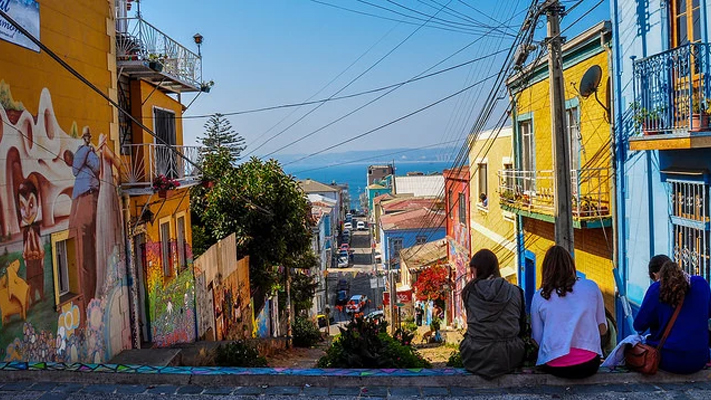
Best Time to Visit
The best time to visit Valparaíso is during the spring and summer months, which run from September to March. During this time, the weather is warm and sunny, making it perfect for exploring the city’s many attractions and outdoor activities, such as visiting the beaches and taking a walking tour of the city’s historic downtown.
However, the summer months can be crowded, especially during the peak tourist season in December and January, so it’s important to book accommodations and activities in advance.
The fall and winter months, which run from April to August, can be chilly and rainy, but they also offer a quieter and more relaxed atmosphere, with fewer tourists and lower prices on accommodations and activities. If you’re interested in exploring the city’s cultural scene and museums, this can be a good time to visit as well.


